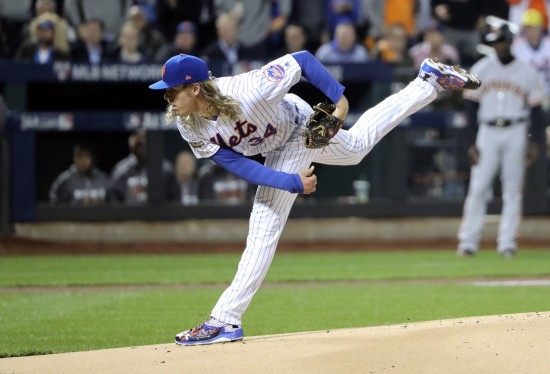
One of the most famous lines in baseball history was Spahn and Sain and pray for rain, a reference to the superiority of the top two pitchers in the four-man rotation of the 1948 Boston Braves. Many young fans are unaware that until the late 1960s and early 1970s most teams went with a four man rotation. Amazing, when you consider how the press and management of a team will today make such a deal out of a pitcher throwing “on three day’s rest”.
For decades that was the standard in baseball. Baseball has drastically changed in how its starting pitchers are handled. Compare the 1986 Mets where Dwight Gooden threw 250 innings and 12 complete games with the 2016 Mets, where Bartolo Colon led the team with 192 innings and the entire staff threw one complete game.
Baseball has changed and the reason is simple: the financial investment teams put into the development of pitchers has every team scrambling to figure out how to keep those pitchers on the field. There would never be a Mark Fidrych today. Who is Mark Fidrych? The biggest star in baseball in 1976, he came up as a 21-year old rookie with the Tigers and went 19-9 with a 2.34 ERA…and he threw 250 innings. He threw 160 innings for the rest of his career and was out of baseball at the age of 25.
But no matter how much we have babied our pitchers—the five man rotation, the innings courts, the pitch counts, the Mets have failed miserably to keep their pitchers on the field. This year was an exercise in frustration as we watched Matt Harvey, Zack Wheeler, Jacob deGrom, and Steven Matz all lose a great deal of their season (or in Wheeler’s case, the full season for the second year in a row) to injuries.
Why? The theories are out there—the hard slider Warthen teaches them. The fact that each pitcher throws it upper 90s and the human body just can’t sustain that 200 innings a year. The years of competitive ball they played prior to becoming major leaguers when high school/college/travel coaches disregarded their health and pummeled their young arms into early submission.
I propose it is time we try a new approach. Clearly what we have tried has not worked. The Mets should implement a six-man rotation to their major league team next year. Not for a brief period; not for an experiment. They should implement it and leave it in place, and watch as the rest of baseball joins them.
It is not unheard of for teams to go with a six-man rotation. During the 2016 season the Blue Jays, Cubs, Padres and Rays all flirted with the six-man rotation at different times during the year. What is the advantage? The obvious one: you give your arms more rest, you limit their pitch count and inning count over the course of the season, and you count on this to translate to healthier pitchers.
What are the drawbacks? There are two obvious ones, and I do not believe either apply to the Mets. First, most teams simply don’t have six competent starters to send to the mound. Many don’t have five. By stretching a rotation to a sixth man you give your opponent a shot against an inferior pitcher more than once a week.
Second, it limits the appearances of your top pitchers. The Dodgers would not want Clayton Kershaw getting six less starts a year. They’re paying him $32 million this year to pitch as often as possible.

While both arguments have validity, I don’t think either apply to the Mets. First, assuming we bring back Bartolo Colon (which I think we all expect) we hope to go into spring training with Harvey, Wheeler, deGrom, Syndergaard, Matz, Colon, Robert Gsellman and Seth Lugo. That’s eight starters competing for six starts. I believe it is with the utmost importance that Alderson brings in some other competent veteran to compete as well, perhaps a Jered Weaver or Colby Lewis. Bringing together nine pitchers like this we should be able to find six not only competent pitchers but strong pitchers.
The second reason certainly doesn’t apply to the Mets due to their depth within the rotation. Unlike the Dodgers, the Mets can put a top of the line starter out there every night. Even Gsellman and Lugo pitched to a sub 3.00 ERA and it’s a lot easier to swallow taking a start away from a Syndergaard or a deGrom knowing a highly competitive pitcher will take the mound.
Why is it important for the Mets to go to a six-man rotation? With so many pitchers coming back from surgeries there is little doubt pitch and inning counts will be enforced. Hopefully this will assuage concerns of overuse while at the same time minimizing the risks for injuries. The six-man rotation could be a step toward seeing our pitchers on the mound in September, instead of on the disabled list.















